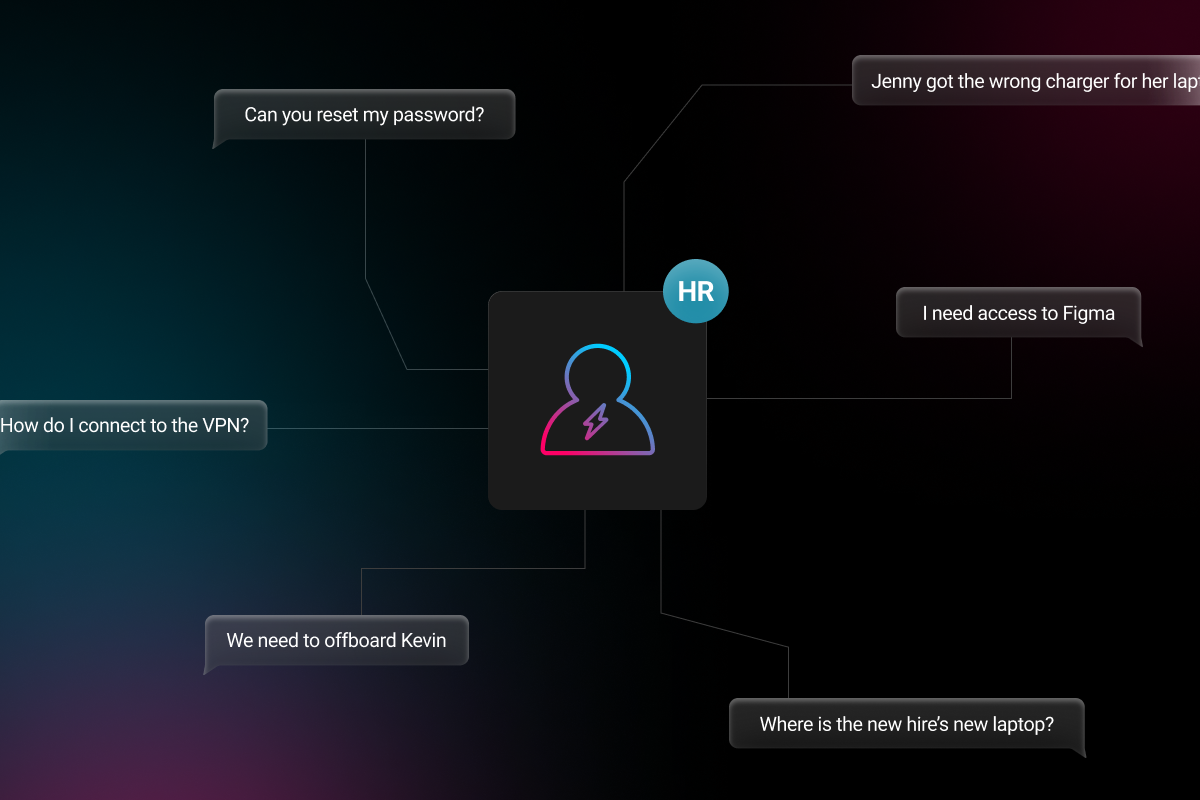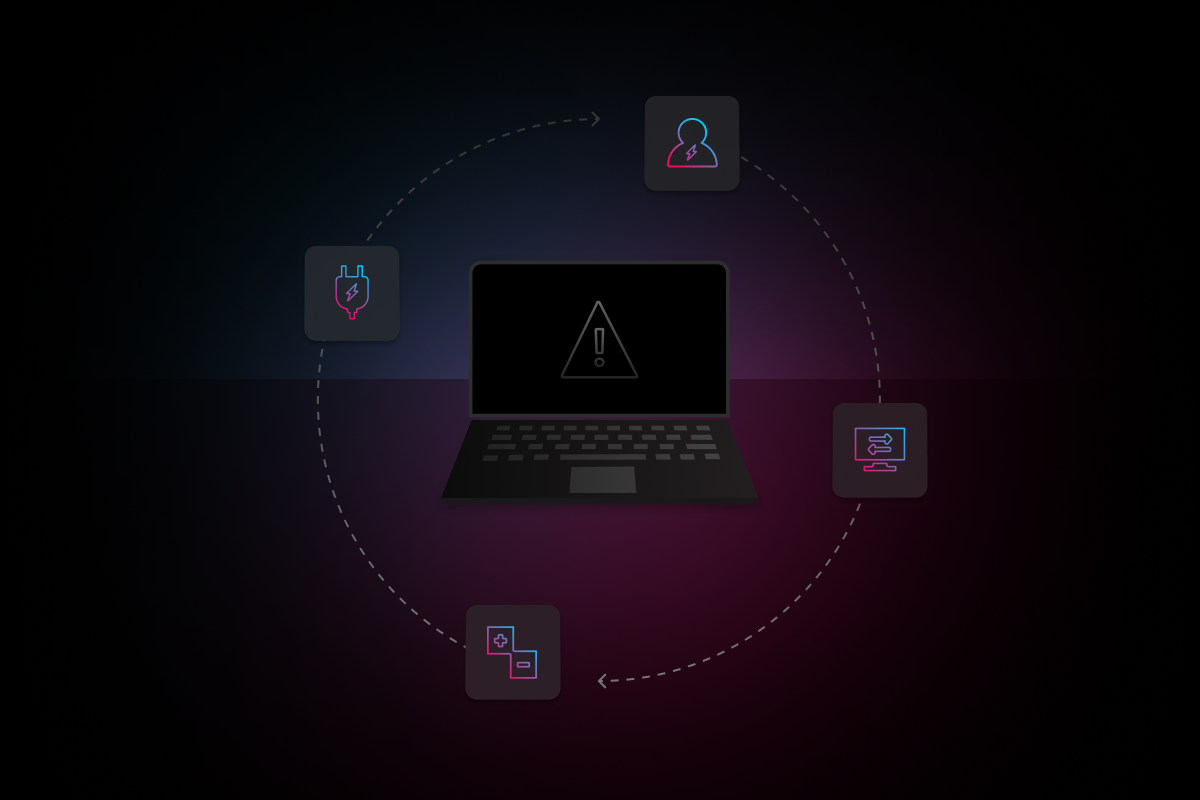
In an always-online world, we’ve grown accustomed to having internet access without interruption. That’s why messages such as “DNS server not responding,” “DNS Server Unavailable,” or “Server DNS Address could not be found” can bring on panic attacks.
There are a few possible reasons as to why your DNS server might be unavailable. It could be that your browser’s cache needs to be refreshed, or perhaps your router is malfunctioning. The DNS server you are using could be acting up, or maybe your firewall is causing problems. All of these issues can lead to that same annoying error message, which means there is also a list of different solutions. But don’t worry. We’re here to talk you down from the ledge and walk you through some DNS troubleshooting.
How Do DNS Servers Work?
When you have DNS problems, understanding how DNS servers work can help with troubleshooting. A website has a name and a number. The name is what users type into a browser, such as https://electric.ai, to access a site. Tied to that domain name are numbers or IP addresses that tell the internet the website’s location. That is the task of a DNS server –to tie the name to the number.
When a website’s name is entered, the browser asks the nearest DNS server for its IP address. The DNS server returns the IP address, and the browser connects to the webpage that then appears on your screen If the DNS server is unavailable, the browser has no way of acquiring the website’s IP address, so it returns an error.
How To Fix DNS Server Unavailable
DNS-related problems can be caused by any of the following:
- Browser
- Computer
- Router
- ISP
If the issue is browser or router related, you may be able to correct the problem without outside assistance. If the problem resides with your ISP or DNS server, it’s going to take a little more time to resolve.
Browser DNS Troubleshooting
Sometimes, the problem isn’t the DNS server; it’s the browser. If it is, one of the following tips should fix the problem:
- Reset the Browser: The first step is to close or quit the browser and restart. Sometimes, it is that simple.
- Clear the Browser’s Cache: For frequently accessed websites, webpages are cached (stored) on a local computer for faster load times. Cached websites and IP addresses do not always update. If the computer is trying to access a website using an outdated IP address, the request will fail. Clearing the browser’s cache should fix the problem.
- Use a Different Browser: The final test is to try a different browser. If using Firefox, try using Chrome or Safari to access the web. If using a different browser fixes the problem, you may need to update the default browser. If updates do not work, consider uninstalling and reinstalling the software to see if it fixes the problem.
If the DNS is still unavailable after trying these tips, it’s time to check routers and computer settings.
Computer DNS Troubleshooting
When a computer or router is first used, DNS settings are entered into the device to ensure it can connect to the appropriate DNS server. Sometimes, those settings change, so it’s an excellent idea to check the device settings when a DNS problem occurs.
- Check DNS Settings: Ask the network administrator or ISP for the correct DNS settings. Then, check the DNS settings on the computer to confirm they are correct. If using services such as OpenDNS, be sure to check with the network or ISP for incompatibility issues.
- Temporarily Deactivate Firewall or Antivirus Programs: Firewalls and antivirus software can block IP addresses or websites. The easiest way to check if this is the case is to deactivate the programs and try to connect to the internet. If successful, recheck the DNS configurations in the firewall and antivirus programs.
- Disable Secondary Connections: If the computer has other open connections such as Bluetooth, disable all other connections to avoid conflicts. On a Windows system, disable the peer-to-peer feature.
- Update Network Adapter Drivers: Check that network adapters are up-to-date. If not, update drivers and try connecting again.
From Ken Lewellen, Level II Technician at Electric:
Another thing you might consider is flushing the DNS resolver cache from the local machine/device. It varies by OS but you can read more details here.
Check for static DNS addresses on the computer. Some users tend to use Google’s DNS 8.8.8.8 or 8.8.4.4. Setting it to automatic will request the DNS server from the router/ISP.
If the DNS settings are correct on your devices, but the DNS server is still unavailable, it’s time to check the router.
Router DNS Troubleshooting
Routers can cause problems when connecting to DNS servers. The settings might be incorrect, or the router itself may need to be replaced. Here are tips for troubleshooting routers.
- Connect to the Ethernet: To determine if a router is the problem, switch to a cabled connection. Connect a computer to the router using an ethernet cable. If using the ethernet connection solves the problem, the router is probably at fault. Confirm that the router is configured correctly.
- Restart the Router: Resetting a router may help resolve a DNS issue. When a router is reset, its cache will be refreshed, which may resolve the issue. Unplug the router and modem. Wait at least 15 seconds before plugging the power cables back in. Wait for the devices to come online.
- Update Router: Check for router updates and apply them if available.
- Reset Router to Default Settings. It’s not uncommon to see custom DNS settings applied to home routers. This is usually used to bypass an ISP’s DNS server and provide an alternative to manually setting each device’s DNS. If unsure, resetting the router to default is an option to clear out any custom settings.
If your router is working, the problem probably resides with an ISP.
ISP DNS Troubleshooting
ISPs maintain DNS servers. On occasion, something changes at the service that requires a local change. If that happens, the internet connection may fail.
- Is it the ISP? An ISP’s DNS server may be down. To check, ping the IP addresses of the DNS servers. Remove any addresses that do not respond. To find the IP addresses, select “Obtain DNS server address automatically.” If this option is not available, contact the ISP.
- Is it the DNS Server? If a DNS server becomes overwhelmed or malfunctions, it will become unavailable. Using the list of DNS server addresses, try switching to another DNS server.
- Could it be Your Company’s Server? Not necessarily ISP related, but if a user is connecting to a VPN, or is on a local work network, they may be getting a DNS address from their company’s server. If that’s the case and they’re getting DNS errors, the server may need to be looked at.
How to Avoid DNS Issues
We can’t eliminate all DNS issues, but we can reduce the likelihood of experiencing problems. Resetting or clearing your DNS cache can help if you travel a lot or if you connect to many different networks. It’s also important to:
- Ensure software, drivers, and devices are up to date.
- Monitor infrastructure health and security.
- Use network diagnostics for checks such as speed tests.
To learn more about managing your IT with confidence, get in touch with Electric today. Electric offers SMBs a single, simplified platform to confidently purchase, manage, and secure their IT fleet. With Electric, you can oversee your organization’s employee and business data, simplify onboarding and offboarding tasks, and push best-practice security policies across company devices.



